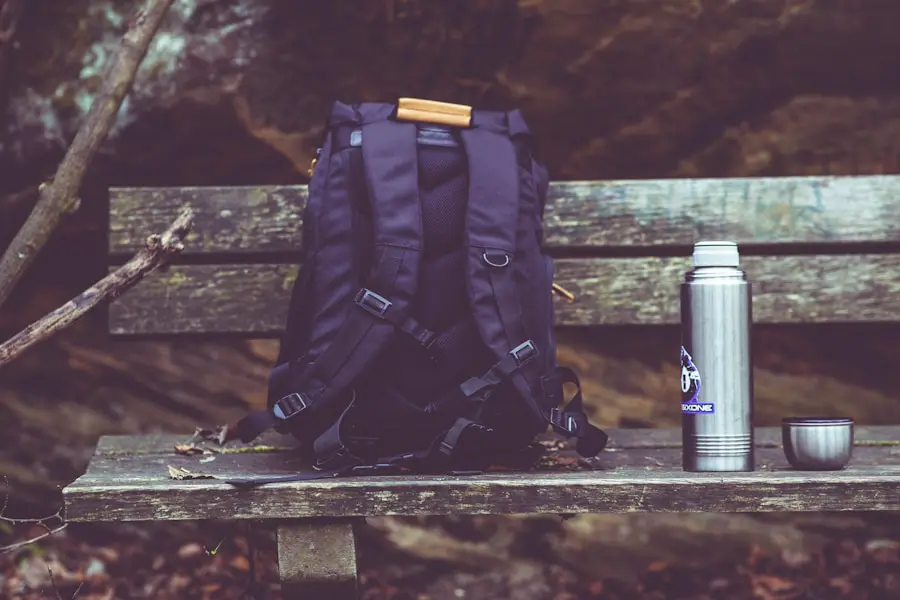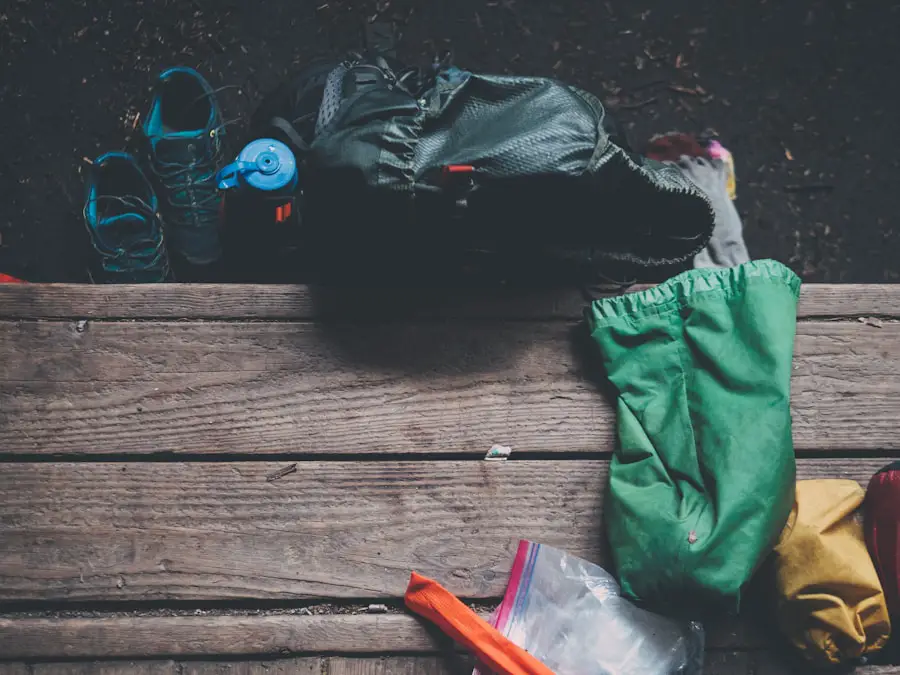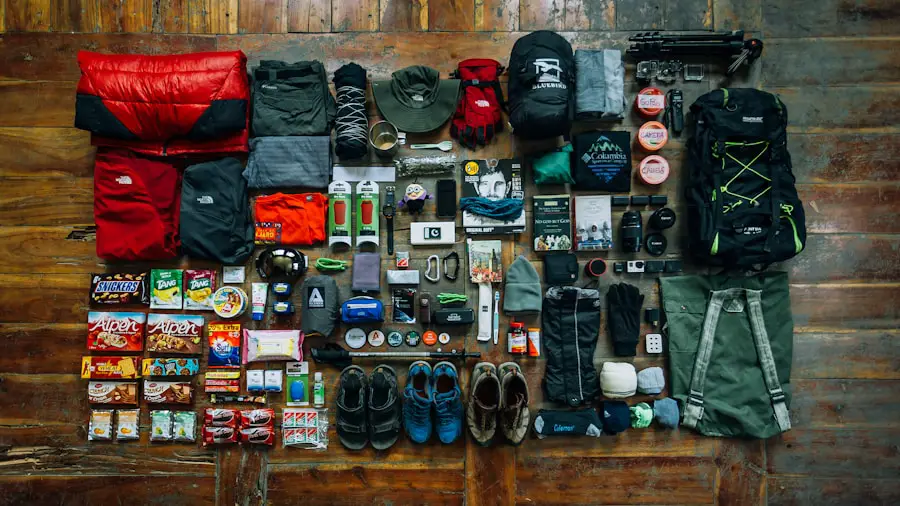When embarking on any outdoor adventure, the importance of appropriate footwear cannot be overstated. The right shoes or boots can make the difference between a comfortable trek and a painful ordeal. Hiking boots, for instance, are designed with specific features that cater to the demands of rugged terrain.
They typically offer enhanced ankle support, which is crucial for preventing injuries on uneven ground. A well-constructed boot will also have a durable outsole with deep lugs for superior traction, allowing hikers to navigate slippery rocks or muddy trails with confidence. Moreover, the material of the footwear plays a significant role in performance.
Leather boots, while heavier, provide excellent durability and water resistance, making them ideal for wet conditions. On the other hand, synthetic materials are often lighter and more breathable, which can be advantageous in warmer climates. It’s essential to consider the type of terrain you will encounter and choose footwear that aligns with those conditions.
Additionally, breaking in new boots before a long hike is critical; this helps to avoid blisters and discomfort that can arise from wearing untested footwear over extended periods.
Key Takeaways
- Choose lightweight and comfortable footwear suitable for the terrain
- Select a backpack with proper support and adjustable straps for a comfortable fit
- Carry navigation tools such as a map, compass, or GPS for route finding
- Dress in layers with moisture-wicking clothing for varying weather conditions
- Stay hydrated by carrying enough water and consider a hydration system for easy access
- Pack a first aid kit with essentials like bandages, pain relievers, and antiseptic wipes
- Carry a lightweight and weatherproof shelter such as a tent or tarp
- Pack high-energy snacks and easy-to-prepare meals for sustained energy on the trail
Backpack
A well-chosen backpack is an essential piece of gear for any outdoor excursion, serving as the primary means of carrying all necessary supplies. The size and capacity of the backpack should be tailored to the length of the trip and the amount of gear required. For day hikes, a smaller pack with a capacity of 20 to 30 liters may suffice, while multi-day treks necessitate larger packs that can hold 50 liters or more.
The design of the backpack also matters; features such as padded shoulder straps, a hip belt, and a ventilated back panel can significantly enhance comfort during long hikes. In addition to comfort, organization is key when selecting a backpack. Many modern packs come equipped with multiple compartments and pockets that allow for easy access to gear without having to rummage through the entire bag.
Hydration reservoirs or designated pockets for water bottles are also beneficial, ensuring that hydration is readily available on the go. Furthermore, external attachment points for trekking poles or sleeping bags can add versatility to your pack, making it easier to carry all necessary equipment without compromising on space or accessibility.
Navigation tools

Navigating through unfamiliar terrain requires reliable tools to ensure safety and direction. Traditional maps and compasses remain invaluable resources for outdoor enthusiasts, providing a tangible means of understanding the landscape. A topographic map, for instance, offers detailed information about elevation changes, water sources, and trails, which can be crucial for planning routes effectively.
Learning how to read these maps and use a compass is an essential skill for any hiker, as it fosters independence from electronic devices that may fail due to battery depletion or lack of signal. In addition to traditional navigation methods, modern technology has introduced GPS devices and smartphone applications that can enhance navigation capabilities. These tools often provide real-time tracking and can display your location on detailed maps.
However, reliance solely on electronic devices can be risky; they are susceptible to battery failure and environmental factors such as extreme weather conditions. Therefore, it is prudent to carry both traditional navigation tools and modern technology to ensure redundancy in case one fails.
Clothing
| Category | Revenue (in billion USD) | Market Share (%) |
|---|---|---|
| Apparel | 1,842 | 32.4 |
| Footwear | 365 | 6.4 |
| Accessories | 280 | 4.9 |
The clothing worn during outdoor activities plays a pivotal role in comfort and protection against the elements. Layering is a fundamental principle in outdoor apparel; it allows for adaptability to changing weather conditions. The base layer should be moisture-wicking to keep sweat away from the skin, while insulating layers provide warmth without bulk.
Fleece or down jackets are popular choices for insulation, as they trap heat effectively while remaining lightweight. The outer layer should be waterproof or water-resistant to shield against rain and wind. Choosing the right materials is equally important.
Synthetic fabrics like polyester and nylon are often favored for their quick-drying properties and durability. Merino wool is another excellent option; it offers natural moisture-wicking capabilities and temperature regulation while remaining odor-resistant. Additionally, attention should be paid to accessories such as hats, gloves, and socks.
A good pair of moisture-wicking socks can prevent blisters and keep feet dry, while a hat can provide protection from both sun and rain.
Water and hydration
Staying hydrated is crucial during any outdoor activity, as dehydration can lead to fatigue, decreased performance, and even serious health issues. Carrying an adequate supply of water is essential; the general guideline suggests drinking about half a liter of water per hour during moderate activity in moderate temperatures. For longer hikes or in hotter climates, this amount may need to be increased significantly.
Portable water filtration systems or purification tablets can also be invaluable for accessing natural water sources safely. Hydration packs have gained popularity among hikers for their convenience; these packs allow for hands-free drinking through a tube while on the move. They typically have a reservoir that can hold several liters of water, making it easy to stay hydrated without stopping frequently.
However, traditional water bottles remain a reliable option as well; they are easy to refill and clean. Regardless of the method chosen, planning ahead for water needs is vital—knowing where water sources are located along your route can help ensure you remain adequately hydrated throughout your journey.
First aid kit

A well-stocked first aid kit is an indispensable component of any outdoor adventure. Accidents can happen at any time, whether it’s a minor scrape or a more serious injury like a sprained ankle or allergic reaction. A comprehensive first aid kit should include adhesive bandages in various sizes, antiseptic wipes for cleaning wounds, gauze pads for larger injuries, and medical tape for securing dressings.
Additionally, including items such as tweezers for splinter removal and scissors for cutting tape or clothing can enhance the kit’s utility. Beyond basic supplies, it’s wise to include personal medications or items specific to your needs—such as an epinephrine auto-injector for severe allergic reactions or pain relievers like ibuprofen or acetaminophen. Familiarizing yourself with the contents of your first aid kit before heading out is crucial; knowing how to use each item effectively can make a significant difference in an emergency situation.
Furthermore, taking a wilderness first aid course can equip you with essential skills to handle various medical scenarios that may arise while exploring remote areas.
Shelter
Having adequate shelter is vital when spending extended periods outdoors, especially in unpredictable weather conditions. Tents are the most common form of shelter among campers and hikers; they come in various shapes and sizes designed for different environments—from lightweight backpacking tents that prioritize portability to more robust models that offer greater protection against harsh weather conditions. When selecting a tent, consider factors such as weight, ease of setup, and weather resistance.
In addition to tents, other forms of shelter may be appropriate depending on the situation. Tarps can provide versatile coverage against rain or sun when set up correctly; they are lightweight and easy to pack but require some knowledge of knots and rigging techniques. Hammocks have also gained popularity among outdoor enthusiasts; they offer a comfortable sleeping option suspended between trees but require additional gear such as rain flies for protection against the elements.
Regardless of the type of shelter chosen, ensuring it is suitable for the expected weather conditions is paramount for safety and comfort.
Food and snacks
Nutrition plays a critical role in maintaining energy levels during outdoor activities. Packing the right food can enhance performance and enjoyment on the trail. Lightweight options such as dehydrated meals are popular among backpackers; they are easy to prepare by simply adding hot water and provide substantial calories without adding excessive weight to your pack.
Energy-dense snacks like nuts, trail mix, energy bars, and jerky are excellent choices for quick boosts during hikes. Planning meals ahead of time is essential; consider factors such as cooking equipment needed (if any), preparation time, and dietary restrictions among group members. For longer trips where cooking is feasible, incorporating fresh fruits and vegetables can add variety and essential nutrients to your diet.
Additionally, being mindful of waste management is crucial; packing out all trash ensures that natural areas remain pristine for future visitors. By carefully selecting food options that are nutritious, lightweight, and easy to prepare, outdoor enthusiasts can sustain their energy levels while enjoying their adventures in nature.
If you’re planning a hiking trip, it’s important to pack wisely to ensure a comfortable and enjoyable experience. One essential item to bring along is a reliable carry-on suitcase with spinner wheels, like the ones featured in this article. Having a sturdy and easy-to-maneuver suitcase can make traveling to and from your hiking destination a breeze. Additionally, consider investing in a carry-on suitcase with a USB charger, as highlighted in this article, to keep your electronic devices powered up while on the go. Don’t forget to also check out the best double travel strollers for spring adventures in this article if you plan on bringing little ones along for the hike.
Love travel? Join Our Facebook Community For More Tips.
FAQs
What should I bring on a hiking trip?
When going on a hiking trip, it’s important to bring essential items such as water, food, navigation tools, first aid kit, appropriate clothing, and a backpack to carry everything.
How much water should I bring on a hiking trip?
It’s recommended to bring at least 2 liters of water per person for a day hike. In hot or strenuous conditions, you may need to bring more.
What kind of food should I bring on a hiking trip?
Pack lightweight, high-energy snacks such as trail mix, energy bars, and dried fruits. For longer hikes, consider bringing sandwiches, wraps, or other portable meals.
What navigation tools should I bring on a hiking trip?
A map and compass are essential for navigation on a hiking trip. Consider also bringing a GPS device or a smartphone with a GPS app as a backup.
What should I include in a first aid kit for a hiking trip?
A basic first aid kit for a hiking trip should include adhesive bandages, gauze pads, adhesive tape, antiseptic wipes, blister treatment, pain relievers, and any personal medications.
What clothing should I bring on a hiking trip?
Wear moisture-wicking and breathable clothing, and dress in layers to adjust to changing weather conditions. Don’t forget to bring a hat, sunglasses, and sunscreen for sun protection.
What kind of backpack should I bring on a hiking trip?
Choose a backpack that is comfortable to wear and has enough capacity to carry all your essentials. Look for features such as padded shoulder straps, a waist belt, and multiple compartments for organization.
